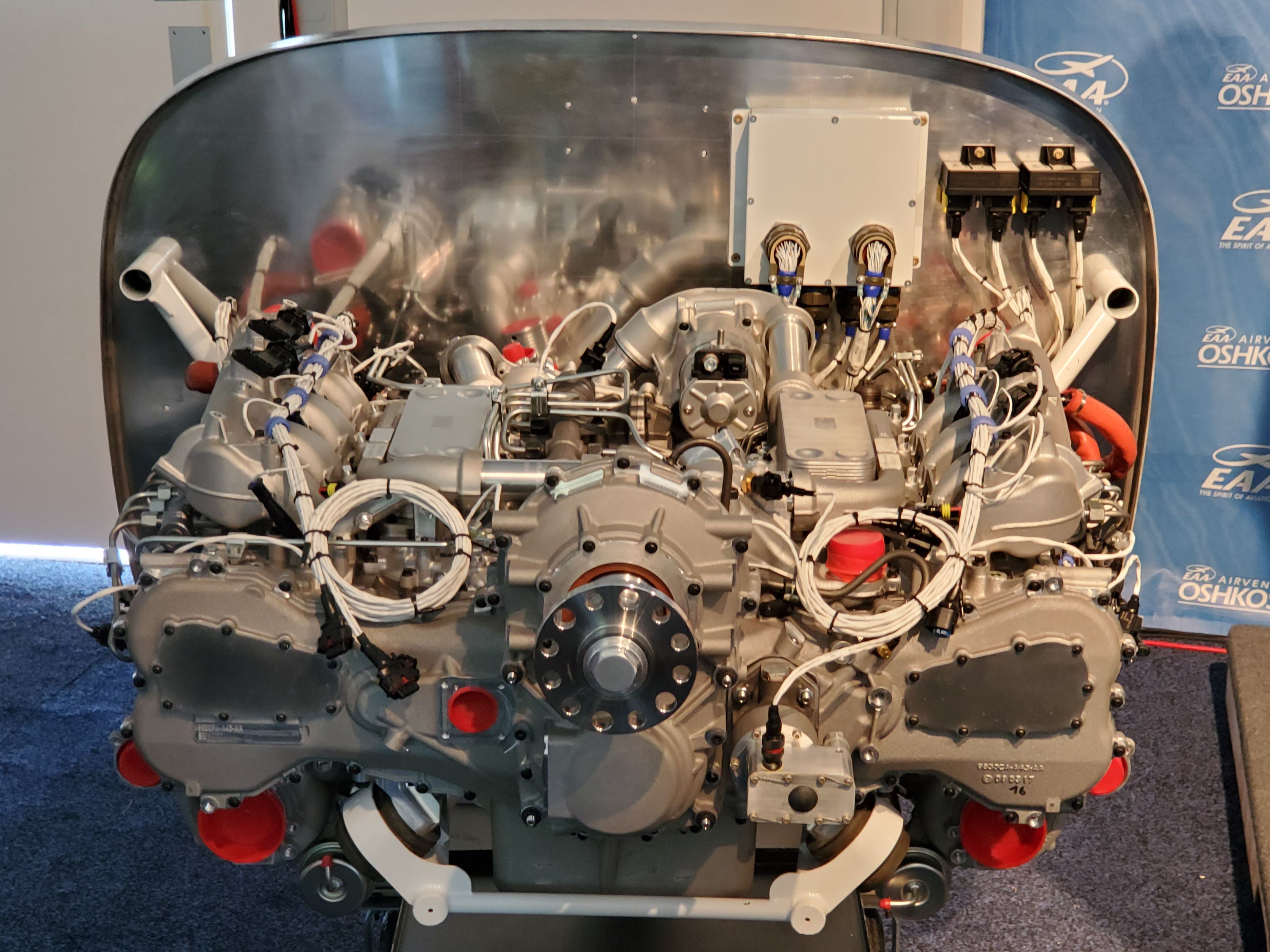Engineered Propulsion Systems (EPS) has announced that certification testing is progressing on its clean-sheet Graflight V-8 engine. The company says it is in the process of conducting environmental and block testing for type certification credit on the eight-cylinder engine, which is capable of producing 320-450 HP. According to EPS, the type certificate variant produces 385hp.
The Graflight V-8 is a 4.3L flat vee capable of operating on diesel, jet fuel and kerosene. It is designed for a 3000-hour TBO. Engine features include an electronic control system and common rail fuel system, one electronic and three mechanical vibration control mechanisms, steel crank case and pistons, and single-lever operation. The production model of the engine debuted at Aero Friedrichshafen last April.
Of the more than 650 responses submitted to an EPS inquiry on multi-engine aircraft STC interest, the majority of owners wanted to see the Graflight V-8 available for the Beech Baron (20 percent) followed by the Ted Smith/Piper Aerostar (18 percent), Cessna 400 series (16 percent) and Cessna 300 series (15 percent). EPS also announced that it is planning to begin testing of its four-cylinder engine project in August 2019.




































Yea!!!
What is the difference between a “flat V” and a horizontally-opposed engine?
V engines have shared crankpins and flat engines do not.
They have actual pictures of their acutal V8 at their actual website.
There is someone working on a Flat Diesel. Maybe it Continental.
I am also wondering about the “flat V” configuration. I know that a smooth engine will have a bank angle of 720° divided by the number of cylinders. So a smooth V-12 should have an angle of 60°. A smooth V-10 would be 72°. A smooth V-8 is 90°. A smooth V-6 would be 120° but that doesn’t fit under the hood of a car, so they usually make them 60° (smoothness compromise) or 90° to share manufacturing tooling with the V-8s. The 120° geometry can also be achieved for a six cylinder engine in the straight (inline) configuration.
The next step (the only “flat V” that I can think of) would be a four-cylinder engine. The best bank angle for a V-4 is 180°.
With the caveat that I’m not an engine expert, my understanding is that the difference is primarily how the piston connecting rods are connected. In a true horizontally opposed engine, each piston has its own crankpin. In a Vee (even if the angle of the “V” is 180-degrees), pairs of pistons share crankpins.
Double-ended connecting rods, or paired singles?